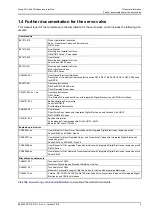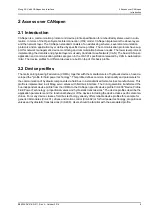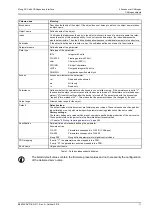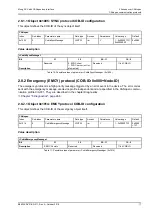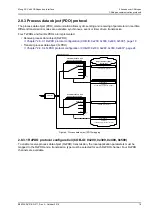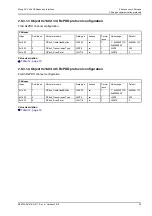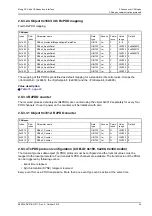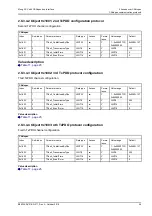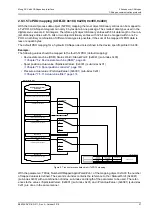
Moog ACV with CANopen bus interface
2 Access over CANopen
CAN data link layer
B99224-DV018-D-211, Rev. A, October 2018
13
2.6 CAN data link layer
The CAN data frame can carry up to 8 bytes data. The header has an 11 bit communication object identifier
(COB-ID) used to address a CAN service. The lowest COB-ID has the highest transmission priority. 29-bit
COB-IDs are not supported.
Figure 4: CAN protocol
2.7 CAN bit rate and Node-ID configuration
The bit rate of the CAN bus communication can be changed to achieve a maximal transmission rate by a
given length of the cable. Each node in the network has a unique Node-ID which must be configured before
initial operation.
The Node-ID and the bit rate can be changed using:
• Layer Setting Service (LSS)
• Service Data Objects (SDO)
The following standardized CANopen bit rates and maximum cable lengths can be configured:
See also document CA63420-001 "User Manual Electrical Interfaces"
0x6000…0x67FF
Standardized profile area 1st logical device
CiA 408
0x6800…0x9FFF
Standardized profile area 2nd…8th logical device (not used)
CiA 301
0xA000…0xAFFF
Standardized network variable area (not used)
0xB000…0xBFFF
Standardized system variable area (not used)
0xC000…0xFFFF
Reserved for further use
Index
Object
Reference
Table 6: Structure of the CANopen object dictionary (OD)
SOF
COB-ID
RTR
DLC
Data
CRC
ACK
EOF
1
11
1
6
16
0, 8, 16, 24, 43, 40, 48, 56 oder 64
2
7
MSB
LSB
SOF
Start of frame
COB-ID
Communication object identifier, 11-bit
RTR
Remote transmission request
DLC
Data length code
Data
CANopen protocols: SDO, PDO, NMT, EMCY …
CRC
Cyclic redundancy check
ACK
Acknowledgement
EOF
End of frame
Bit rates
Maximum cable length
1000 kBit/s
< 25 m
800 kBit/s
< 50 m
500 kBit/s
< 100 m
250 kBit/s
< 250 m
125 kBit/s
< 500 m
50 kBit/s
< 1000 m
20 kBit/s
< 2500 m
Table 7: CANopen bit rates






